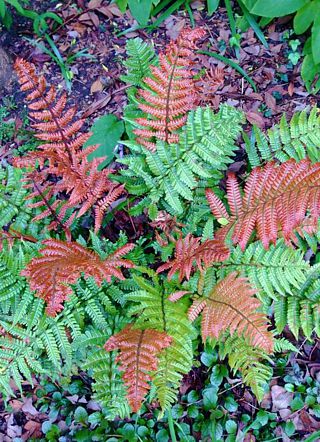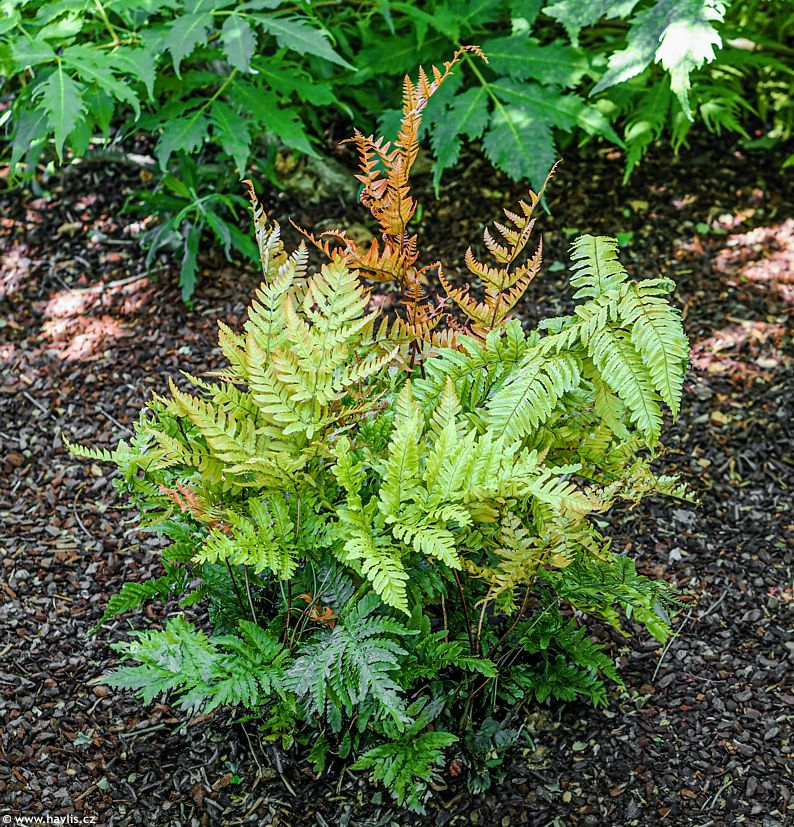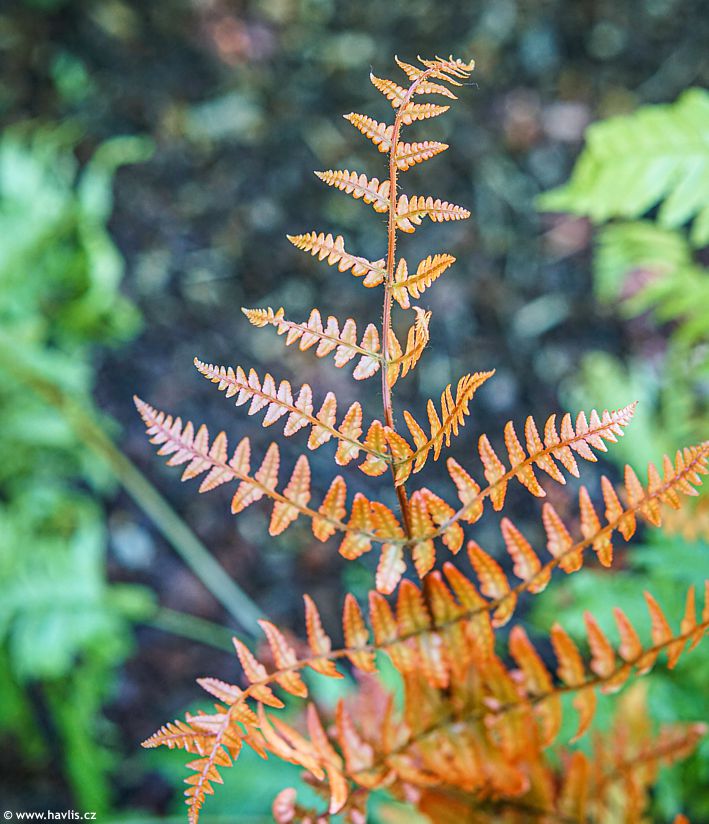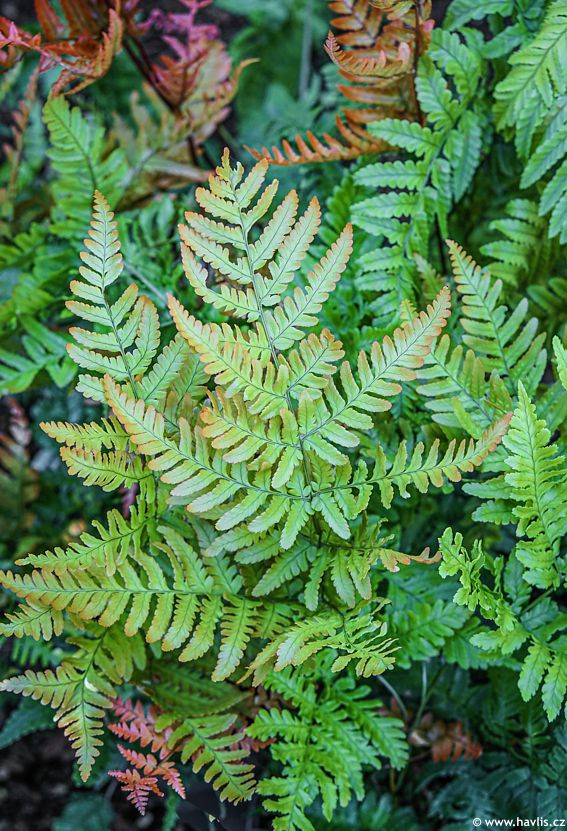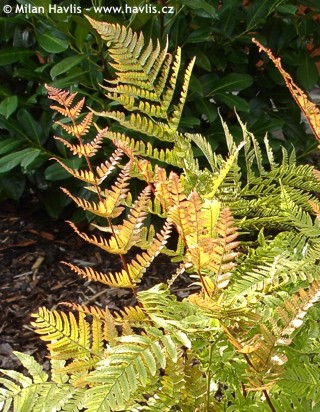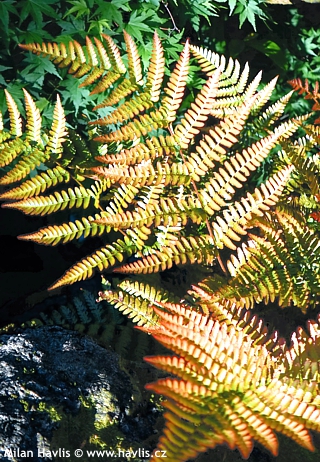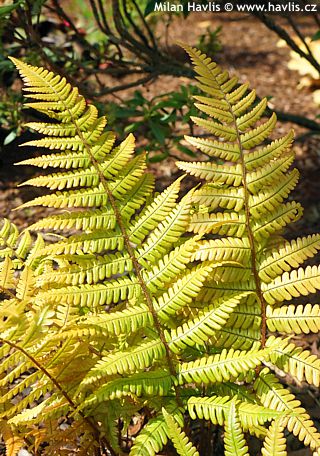Dryopteris erythrosora var. KOIDZUMIANA Japanese Rosy Buckler fern, autumn fern
Dryopteris
Japanese Rosy Buckler Fern (autumn fern) is an evergreen and very attractive fern species easily distinguished by brightly coloured young leaves and distinctly regular fronds. Koidzumiana is a variety selected and introduced by the former president of the American Fern Society, Barbara Jo Hoshozaki (1925-2012). She devoted most of her life to ferns, their study and well as correcting taxonomic errors.
Koidzumiana is a Japanese Rosy Buckler fern which stands out for its beautifully coloured young leaves, like all varieties from this group. But koidzumiana has a more prominent rusty red shade, which changes to bronze-golden, and later leaves mature to deep green. The leaves are glossy, bi-pinnate and form 30-50 cm long, slightly arching fronds. Their size is directly proportional to the amount of nutrients in soil and location – this variety prefers a warmer spot. New leaves once or even twice more during the growing season and remain handsome until the first hard frosts. In spring they are perhaps the slowest to show up.
Japanese fern is a reliable and undemanding species, fern growers often make fun of it saying that it is for amateurs because it is almost indestructible. It can handle worse soil conditions and virtually thrives on neglect. It prefers partial shade but lives deep shade, too, acidic soil will enhance foliage colour but is not a must, and even moisture will help produce a dense tuft. It will not live in heavy clay or water-logged ground. Remove all foliage after winter. Hardy to about -24 ° C (USDA zone 6).
Last update: 23-04-2023

































